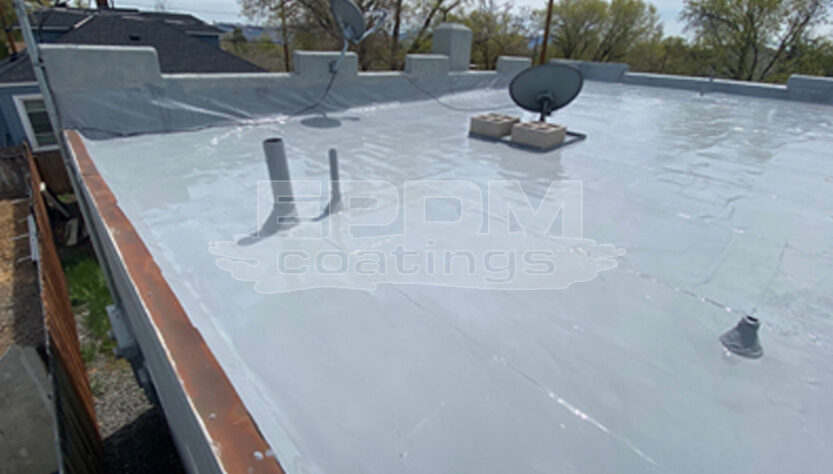Choosing the best RV roof material is largely a matter of personal preference. Still, there are some factors that are involved in your decision that you should be aware of before you begin shopping for a new roof. Two of the most popular options on the market for today’s RVs are TPO and EPDM. Both of these are synthetic polymers that are designed specifically for use on RVs and mobile homes. They offer low maintenance roofing solutions, but each has its own pros and cons to consider.
Before you can compare the two, you really have to understand a little more about what they are:
EPDM: This synthetic rubber is designed specifically for roofing, and is available in both liquid and sheet form. When used as a liquid, it will dry to a semi-solid finish, offering a flexible watertight seal. EPDM sheets are dried out and cured, which offers less flexibility but a slightly sturdier finish. This material is usually black, although many liquid products dry to a white finish to offer better UV protection and other benefits.
TPO: This synthetic material is a laminated membrane that is relatively cheap. This roofing material can be attached by mechanical screws or adhesion with glue or other roofing adhesives. Details and seams can be heat welded, or they can simply be glued and sealed. This material can also be combined with fiber reinforcements for added strength, but this can also cause more rigidity, leading to difficulty with installation in some cases.
The Best RV Roof Material is Affordable
Since roofing material selection is more about personal preference, what you can afford matters. The costs involved in TPO roofing are higher because the materials are more difficult to manufacture. Additionally, TPO may require additional products like sealants and the fiber reinforcements mentioned above, so you have more to consider than just the cost of the roofing material itself.
EPDM is an economical solution, and in its liquid form it is even more affordable and easy to install. Why does ease of installation matter to cost? If the process is simple, you can replace your own RV roof and save hundreds, if not thousands, on shop or dealership labor costs.
Another factor to consider when it comes down to cost is the thickness. A thicker membrane is going to perform better and provide longer protection, so you should always choose that option if it is within your budget. After all, spending a little more on a better quality roof now, regardless of whether it is TPO or EPDM, is going to save you from more frequent repairs and replacements in the future.
Installation and Maintenance
TPO roofing typically requires hot air welding for the seams, which is a more complex process. Plus, it is going to be more expensive to install because of the need for specialty tools or a skilled welder to complete the work. On the other hand, EPDM can usually be installed even by the most average handy person. Liquid rubber EPDM products are even easier to install, making them a popular choice among DIYers for their ease of installation and lack of maintenance required.
Speaking of maintenance, this is another area where EPDM rubber roofing does the job better. Rubber roofs, when properly installed, will not require much maintenance in the early years. In fact, with regular cleaning and care, a rubber roof can last a long time with minimal or no need for repairs.
A TPO roof, on the other hand, requires regular resealing for the best protection. Like fiberglass, the seams have no other protectant or adhesive like they do on a rubber roof, and therefore rely solely on the protection of a sealant. Applying and reapplying certain products over the years may also cause unnecessary deterioration and damage.


